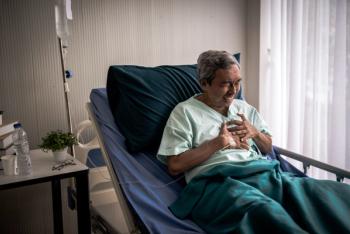
Dr Mary Norine Walsh on Who Is at High Risk for Peripartum Cardiomyopathy
Mary Norine Walsh, MD, immediate past president of the American College of Cardiology, discusses the symptoms of peripartum cardiomyopathy, and who is at the highest risk for developing it.
Mary Norine Walsh, MD, immediate past president of the American College of Cardiology, discusses the symptoms of peripartum cardiomyopathy, and who is at the highest risk for developing it.
Transcript
What are the symptoms of peripartum cardiomyopathy, and who is at high risk for this condition?
Peripartum cardiomyopathy remains a somewhat rare disease, although it occurs in women generally within the last month of pregnancy up to about 5 months after delivery.
The signs and symptoms are those generally of heart failure of any kind: Shortness of breath, fatigue, [and] inability to do activities of daily living which is a condition we call effort intolerance. Any type of symptom like that that a woman experiences later on in her pregnancy or after delivery has to be discussed with her physician rapidly and she needs to seek care.
We know a little bit more about this disease than we did in the past due to some growing registries that have helped support information on the disease. We do know that it is more common in older women, in women who have hypertension during pregnancy, and in women who have more than a singleton birth. But there is a lot we don't know because there is a lot of variability in the incidence of peripartum cardiomyopathy.
The most important information for women to have is what the signs and symptoms are so she can promptly present for care if needed.
Newsletter
Stay ahead of policy, cost, and value—subscribe to AJMC for expert insights at the intersection of clinical care and health economics.







































